 This perfect title prepared by Philip Kaplan together with Jack Currie, lets readers have a close look at the very rare photos obtained from the wartime archives. Nice book for everyone interested in the naval history - it features so many dramatic pictures of merchant ships and rare archive photographs.
The main content of the book has been arranged in ten big and well illustrated chapters covering the development of the aircrafts, description of the sub-types and variants, providing some information of the F82 service during the Korean War, and some other interesting info, supplemented with the final chapter addressing the removal of type from the war theatre in 1952. A very brief contents - Merchantmen; Merchant sailors; Hunters; Will she starve?; Liberty ships; The hunted; Tanker; A cadet's story.
Take some time with this publication and we are pretty sure you will not be disappointed. Real photographic images of the real merchant sailors, their activities, vessels they served, their duties and dangers - this all has been covered. The content of the publication presents a good combination of the nicely written narrative text and excellent professional photos that give the readers a full clear picture of the actual life of the merchant sailors of the past.
 This title was released to address the important aspects of the Dutch shipbuilding in the XVII century, which is a really inaccessible area of research. The problem is that the earliest written sources of relevant information appear only in the late 1600s. The whole wealth of the information presented by Nicolaes Witsen in his first work was a bit hidden under the formulation and quite chaotic structure.
It still remains the extremely valuable publication that needs and deserves careful attention of the readers, and this is what the author has tried to do within the present book. The main content of this volume has been arranged by the author in four big chapters; the first one is introductory, while the second chapter provides readers with the information on how the vessels are constructed in Holland of today, The third chapter of this work addresses the contracts used as the historical sources of information.
The last chapter of this title is conclusive in nature and summarizes the previous chapters. The text of the book has been expanded with the informative tables of comparison between shipbuilding formulas, technical factors of the early ships, key to the ship parts, and several informative drawings for better understanding. The Glossary of the relevant terminology has also been provided.
 The publication, as it is quite clearly understood from its title, is intended to provide readers including both professionals and enthusiasts of maritime industry, with profusely illustrated story of the ship construction as well as the history of warships and liners throughout more than four centuries.
The author has managed to describe in a single volume, full of the extremely interesting stories, so many individual vessels, starting from the sixteenth-century galleons constructed for exploration or for battles, through the trading liners and lush liners and up to the very latest industrial developments such as the nuclear vessels and aircraft carriers.
The book starts with a chapter taking readers to the so-called age of fighting sail, then we are moving to the steam era and warships, ocean liners, container vessels and cargo ships, voyages of adventure... in short, this is an absolutely recommended title for everyone willing not only to read but also to see with their own eyes...
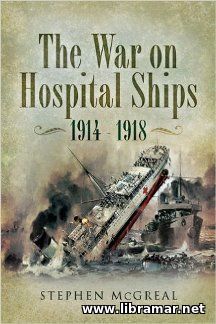 During the early seventies while working as an apprentice shipwright within Cammell Laird Shipbuilders and Engineers I first became aware of men who, while serving in the merchant navy, survived an attack by torpedo. In this instance an unlikely-looking veteran of the Second World War had sailed as a carpenter on merchant ships running the gauntlet of the U-boat packs.
In my youthful innocence the man appeared rather old, forgetful and occasionally confused. His workmates explained his demeanor in whispered tones 'His ship was torpedoed while he was securing cargo in the hold. He managed to scale the hold escape ladders with the sea water lapping at his heels and never quite recovered from the experience'. He was evidently suffering from what we now term Post Traumatic Stress Disorder, something I would again become acquainted with during a stint as a carpenter in the merchant navy.
In the 1970s ageing veterans of the Second World War Atlantic convoys still abounded in an ever shrinking British-staffed merchant navy; they, like so many former veterans, shied away from discussing their wartime experiences. However, one individual routinely kept his cabin light off during the night, so as not to show a light to submarines! During the war his tanker was torpedoed off the Caribbean island of Curacao, and whenever our tramp tanker approached the island he suffered flashbacks, packed a valise and prepared to go to hospital. Three decades later the consequences of the term 'ship torpedoed' took on a new meaning as I witnessed at first hand, the trauma revisit an ageing seaman. It is a sobering thought indeed to imagine the fear and anxiety experienced by the merchant navy personnel as they determinedly maintained the United Kingdom's essential food and materials lifeline. The fourth service depended on women and men like my maternal great-grandfather who survived a torpedo attack off the Irish coast; family legend maintains he returned home, still in his wet clothes.
To add insult to injury when a vessel sank, the shipping companies automatically ceased paying wages to the crew. Denied an income, the seafarer generally signed on the next outward bound ship; faced with the starvation of their families most took to the sea, to worry about the U-boats another day. During the great recruitment drive for the army, volunteers officially had to be aged between eighteen and forty-one years old, extended upwards in 1918 to fifty-one.
The Mercantile Marine had no such confines, exemplified by Mrs. Bridget Trenerry, a sixty-five-year-old stewardess drowned on Asturias. If a person's past life flashes by in the seconds before death, seventeen-year-old Henry George Taylor's must have passed in the blink of an eye, as he drowned trapped in the bowels of the Dover Castle. Their status as non-combatants meant little during the merciless war at sea.
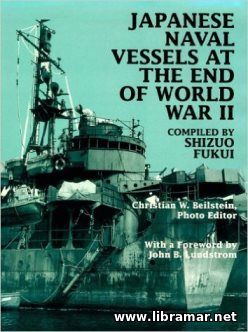 In December of the year 1941, when Imperial Japan made war against the Allied forces, she boasted one of the mightiest and finest navies afloat. Its core was ten battleships and nine aircraft carriers of the Combined Fleet, soon to be joined by three more carriers and the Yamato and Musashi, the largest and most heavily armed battleships ever built.
The fleet's principal weapons were superb carrier aircraft, including the famed Zero fighter, big naval guns, and the Type 93 oxygen-powered "Long Lance" torpedo, the finest in the whole world. By August 1945 a desperate Japan, cut off from her overseas possessions, faced imminent invasion. The Combined Fleet no longer had a single warship that would be larger than a light cruiser. The few remaining capital ships were confined to the several large navy yards, and most of them had already sunk into shallow harbor mud.
The combat power of the Japanese Imperial Navy was vested in its suicide-attack forces: aircraft, midget submarines, human torpedoes, explosive motorboats, and, operating from underwater bunkers, a phalanx of frogmen carrying pole charges. It is this much-altered naval force that is examined in Shizuo Fukui's Japanese Naval Vessels at the End of War. This is a truly fantastic work containing numerous detailed and informative drawings and also photographs contained in a separate chapter.
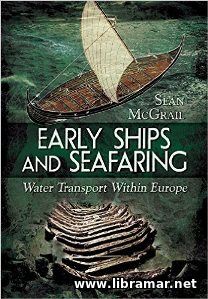 It is a well-known fact that two-thirds of the surface of out planet is covered by sea while the remaining third has numerous lakes plus rivers which used to be pre-eminently early Man's 'highways'. Since the Stone Age, water transport on lakes, rivers and seas have been considered the prime means by which humans explored and further exploited the world, linking together its very dispersed populations, and sustained trade and exchange.
The rafts and the boats remained principle actors in that role until the advent of the aeroplanes in the early twentieth century. Boats are their own advertisement: there therefore was a tendency for the styles of boatbuilding and methods of propulsion and steering to spread around centers of innovation and become regional styles. The main objective of the present volume was to present what is now known about the water transport of two of those regions: the Mediterranean and the European Atlantic seaboard. The time span of the text extends from earliest days to the XV century AD when European ships had begun to be designed in a formal way, and technical descriptions and drawings of water transport were produced. A significant change in water transport occurred with the introduction of the ship - with all that increase in size implies for operational capabilities.
There is no clear distinguishing in the English language between the two, merely a range of characteristics of which the ship, generally speaking, has more than the planked boat. The Oxford English Dictionary defines the 'boat' as 'a small open vessel; the 'ship' as 'a large seagoing vessel. A distinction is thereby drawn between, on the one hand, a small, undecked vessel limited in range and by the weather, and using informal landing places; and, on the other hand, a large, decked vessel, capable of carrying a boat on board, relatively unrestricted in range or by the weather, and often operated from formal harbors with wharfs and jetties.
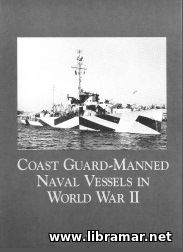 The very first section of the Act about the establishing of the USCG, standing for the US Coast Guard, which was signed by President Wilson in 1915, did state that this entity should constitute an integral part of the American military forces, operating as a part of the American Navy fleet, and acting following the direct orders of the US Navy's secretary or directed by the President.
Subject Act has not actually specified the duties of the smaller service also forming a part of the US Navy; however, in the course of the First World War, American cutters serves as the escort and patrol ships, six of the larger vessels involved in escorting the convoys in the war area. Cutter sailing in home waters also served as the training facilities for the naval personnel; many of their crew members worked on the smaller naval ships and armed yachts.
When the older destroyers of the American Navy were given to the USCG to perform the prohibition-enforcement duties, and when numerous of the oldest ones were actually planned for disposal, six flush-deckers have been received by the Coast Guard. All of them have been eventually sent back to the Navy fleet by 1934; however, the final success of the Coast Guard in operating those vessels made manning such vessels during war one of the logical responsibilities of the Coast Guard...
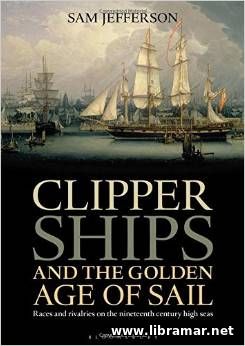 At the times of commercial maritime shipping, the clippers were treated as the truly ultimate expression of grace and speed. There raced out to American and Australian continents at the record speeds and transporting the tea from China - their performance was perfectly combined with their beauty.
This publication is intended to provide the interested readers with the insight to the clippers are with more than two hundred colorful paintings and informative illustrations together with the thrilling and fascinating descriptions of the sea adventures and races. The content of the publication includes the very origins of the clipper ships, great China tea-race, the famous long ocean voyage of the "Cutty Sark" clipper, and many other amazing and glorious pages of the clippers history.
The book features the firsthand accounts, real ship log entries, reports from the newspapers of that time and other details allowing readers make a clear and full picture and making this title an excellent and truly wonderful reading presenting readers with the fantastic collection of the stories of many sailing vessels and sea voyages. The huge amount of interesting facts and images of the book by Sam Jefferson is definitely impressive and difficult to be found in any other publication on the same subject.
« 1 2 ... 5 6 7 8 9 ... 15 16 » |







